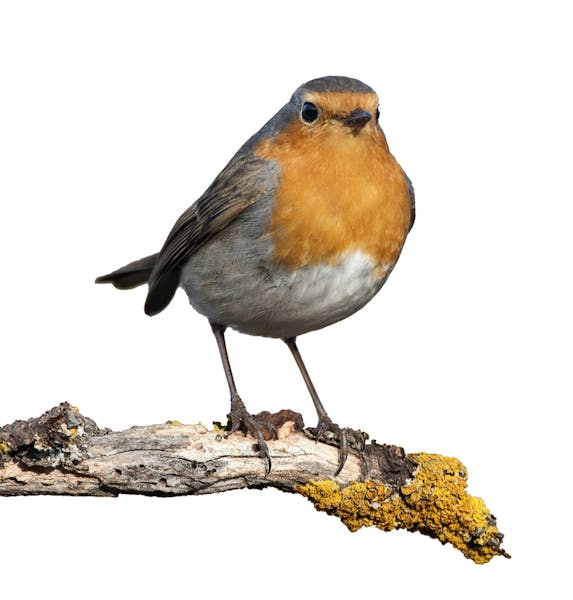GARDEN CITY, MINN. — Saturday was a Gary Clancy type of day. The morning sun rose gloriously against a cloudless sky. The air was fresh. And the oaks, basswoods and maples in Blue Earth County and particularly along the Watonwan River were afire in russets and ambers, scarlets and crimsons — the hues of autumn.
This was the first day of the state's pheasant season, and Gary, given the opportunity, would have been here.
Born in Redwood Falls, Minn., in 1948, he hunted and fished as a kid on and alongside the Minnesota River. Before he died 68 years later, on July 27, 2016, he embarked on many adventures. But his calling was storytelling, and by the time he succumbed to non-Hodgkin's lymphoma, his stories had gained a wide audience.
"I first hunted with Gary when he came back from Vietnam,'' Bob Boughten said. "I was just a kid at the time.''
Boughten, 61, along with his brother Larry, 74, and Larry's grandson Sam Chase, 15, gathered Saturday morning with Lee Clancy, Gary's son-in-law, to celebrate their late friend's life and also to celebrate the state wildlife management area that was recently christened in Gary's name.
Sprawling some 167 acres along the Watonwan River, the area's purchase was funded by nearly countless benefactors who shortly after Gary's death pitched in to commemorate his too-short life and memorably good times.
Graduating from Albert Lea High School in 1966, Gary enlisted in the U.S. Army two years later. A soldier in the First Infantry Division and the 198th Light Infantry Brigade, he served in Vietnam for 14 months, returning home to southeast Minnesota in August 1970.
"He was a duck hunter as a young man, and duck hunting remained his main thing after he returned from Vietnam,'' Larry Boughten said. "One fall he went duck hunting every day of the season except one, and he only missed that day because he had a funeral to attend.''
Pheasants Forever's Minnesota state coordinator, Eran Sandquist, ran point on establishment of the Gary Clancy WMA under that organization's "Build-a-Wildlife-Area'' program. Playing a key role also was Rob Drieslein of Outdoor News, the weekly where Clancy's column regularly appeared.
"Once we started receiving donations, we looked for a project that would properly represent Gary and his lifestyle,'' Sandquist said. "That's when the parcel we eventually bought south of Mankato came to our attention. It was offered by a willing seller, and with the Watonwan River running through it, the area supported a wide variety of wildlife, including turkeys, deer and pheasants.''
Gary's family, including his wife, Nancy, heartily endorsed the area, which was purchased in 2017.
"A lot of the property was in crops at the time,'' Sandquist said. "We spent a couple of years getting the seedbed prepared so we could plant native grasses. Conveyance of the area from PF to the DNR for designation as a wildlife management area was completed in early 2019."
Wide ranging in his sporting pursuits, Gary was comfortable whether sitting in a deer stand or following one of the many Labradors, Brittanies and setters he owned in his lifetime. Especially knowledgeable about whitetail hunting, particularly by archery, he gained his information firsthand, by spending time in the field.
"What set Clancy apart from the pack was his ability to relate to the common sportsman,'' fellow Outdoor News columnist Shawn Perich once wrote. "You can learn a lot about deer hunting by reading his stories, but you won't feel like you are being lectured by some nutty professor. Instead, you feel like you are sitting in an easy chair in his living room, having a conversation about hunting."
Lee Clancy was so impressed with his late father-in-law that when he married Katie, the youngest of Gary and Nancy's three daughters, he changed his name to Clancy.
"I enjoyed grouse hunting with Gary the most," Lee Clancy once said. "As soon as he got into the woods, he was a different man. It seemed like that was where he belonged."
At 9 Saturday morning, opening bell of the ringneck season, Lee Clancy cast two English setters ahead of him. Charging into the bluestem, Indiangrass and switch grass that flourishes where corn and soybeans once grew, the two canines scoured the thick cover for pheasants.
One of the setters was named Recon, short for reconnaissance — "the military observation of a region to locate an enemy or ascertain strategic features,'' according to Webster.
"This setter, Recon, was Gary's last dog,'' Lee Clancy said.
So perhaps the Old Storyteller was on site for this pheasant opener, after all.
Who knows for sure about these things, anyway?
The morning sun had risen gloriously into a cloudless sky. The air was fresh. And the oaks, basswoods and maples in Blue Earth County and particularly along the Watonwan River were afire in russets and ambers, scarlets and crimsons — the hues of autumn.
It was a Gary Clancy type of day.
By example, he had taught his friends and family how to enjoy it.
And they did.
Dennis Anderson dennis.anderson@startribune.com

Anderson: Celebrate Earth Day by rekindling real connection to nature.
Anderson: Anglers protesting tough new Mille Lacs rules are wrong

Anderson: Courts, not politicians, should rule on Red Lake, White Earth lands

Anderson: Multimillion windfall gets invasive carp deterrent moving
![A young whitetail deer searches for food as another blanket of snow coats the arrowhead. ] Minnesota -State of Wonders, Arrowhead in Winter BRIAN PETE](https://arc.stimg.co/startribunemedia/WK32UWWY6FKNWJUIYCJ6ZPT4AU.jpg?h=91&w=145&fit=crop&bg=999&crop=faces)


